Stay up to date with the latest in the travel and hospitality industry, from airline launches and route expansions to new trends and transportation developments shaping the way we explore the world.
This is the November 2025 edition of Airline and Travel News.
BATIK AIR MOVES SINGAPORE OPERATIONS TO CHANGI TERMINAL 4 THIS MONTH
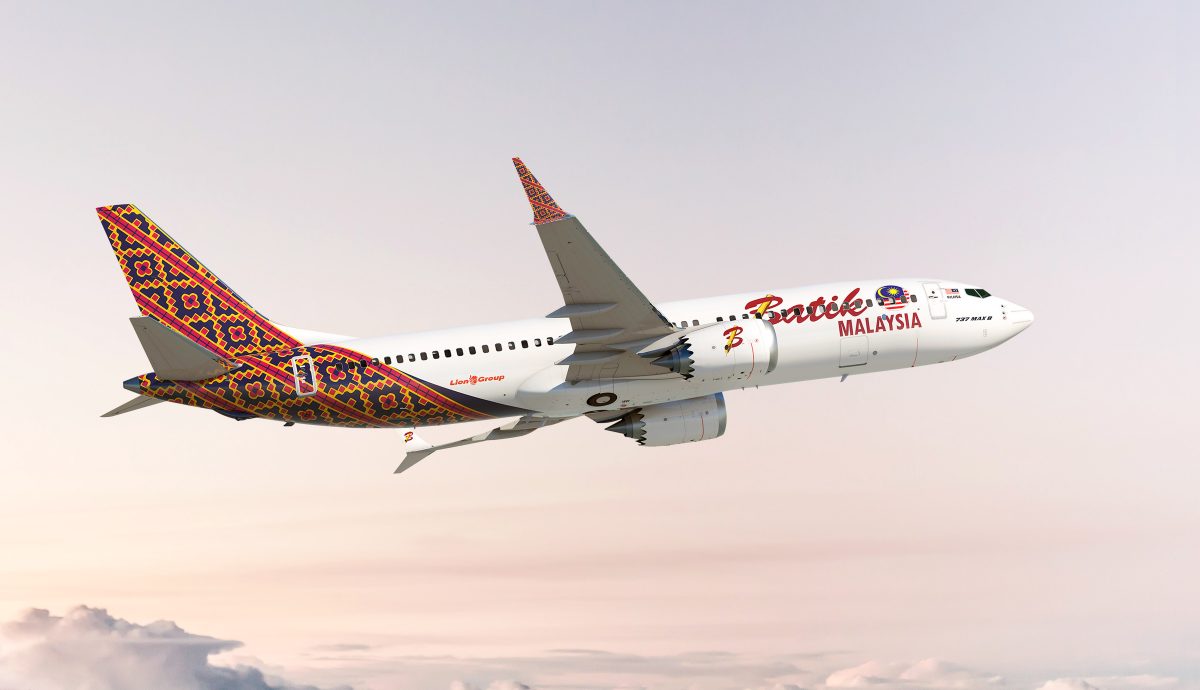
Lion Group, comprising Batik Air Malaysia, Batik Air Indonesia, and Thai Lion Air, will shift operations to Changi Airport Terminal 4 (T4) on November 11, 2025. The move aims to offer passengers a seamless journey, featuring automated check-in and boarding, terminal attractions, and improved connectivity across Southeast Asia.
The relocation from Terminal 3 supports Lion Group’s growth and rising air travel demand. Terminal 4, with a capacity of 16 million passengers annually, showcases Changi’s fully automated self-service system, FAST, alongside unique highlights such as the Chandelier playground, Steel in Bloom garden, and the Heritage Zone, turning the airport experience into part of the journey itself.
Batik Air Malaysia CEO Datuk Chandran Rama Muthy said the move aligns with the group’s long-term growth strategy in Singapore, offering modern infrastructure to support expanding operations and provide a world-class airport experience.
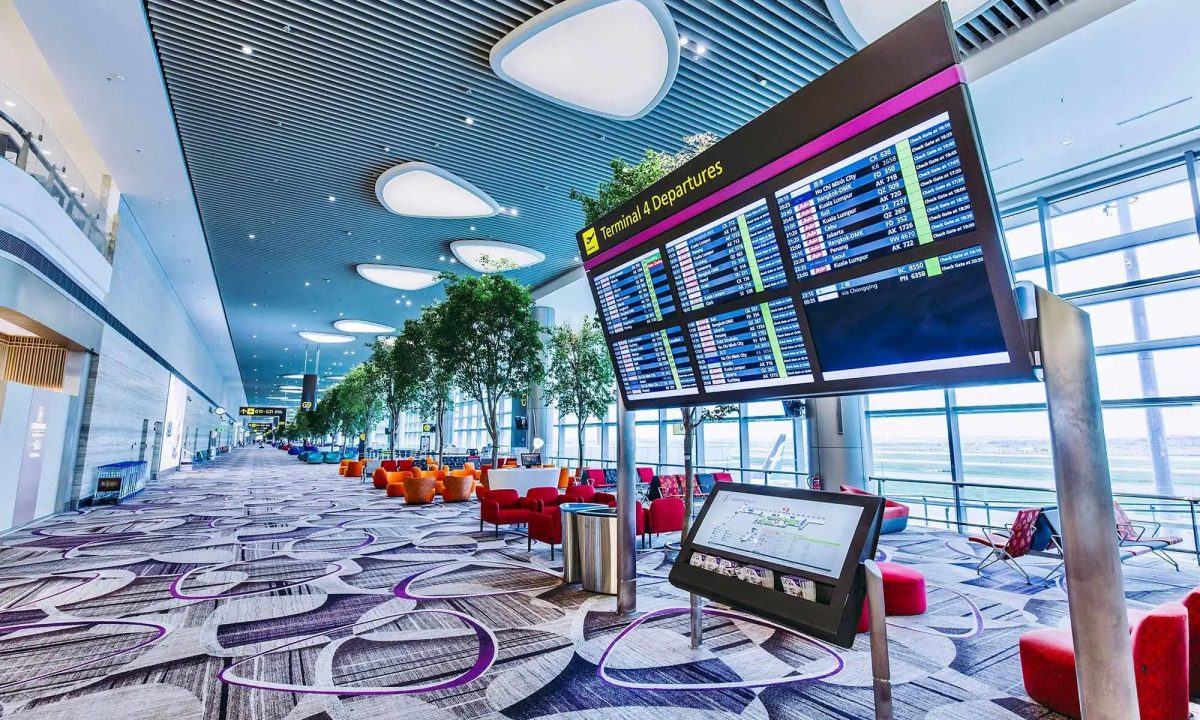
The relocation coincides with the launch of new routes from Singapore to Ipoh, Penang, and Subang on 8 December 2025. Combined with existing Kuala Lumpur services, these flights enhance travel options, support tourism, business, and cultural exchange, and bring communities closer ahead of Visit Malaysia Year 2026.
Passengers are advised to check flight details and plan ahead, while enjoying faster processes, modern facilities, and more opportunities to explore Southeast Asia from Singapore’s award-winning airport.
For more information, download the Batik Air app or visit batikair.com.
GLOBAL AIR TRAVEL: THE SKY’S THE LIMIT, BUT NOT EVERYWHERE
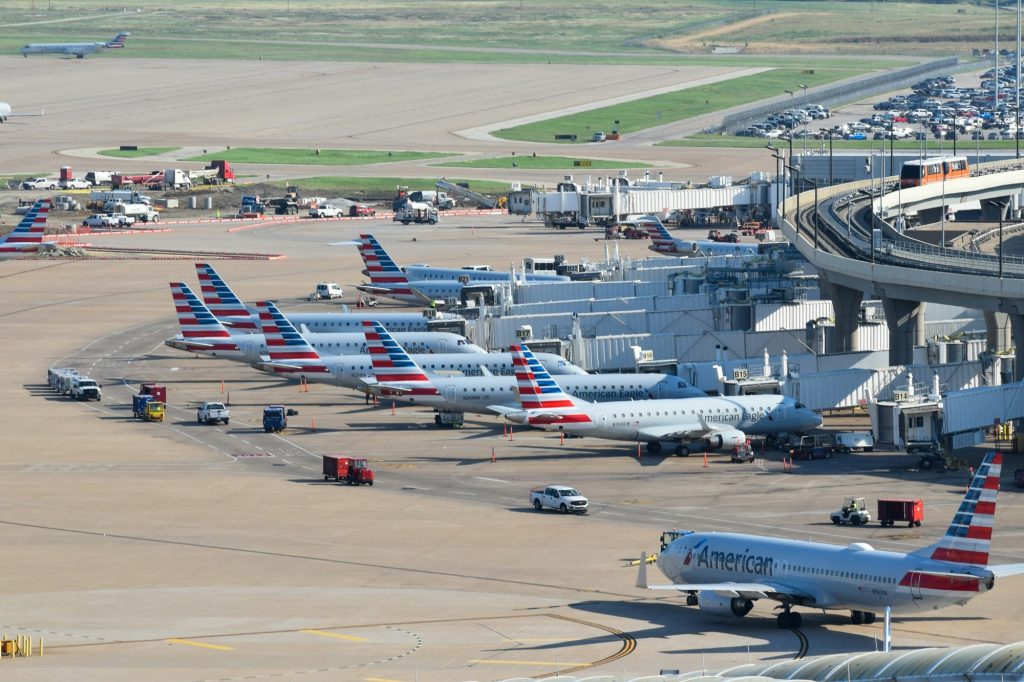
Global air travel is surging once again, though not all regions are climbing at the same altitude. According to Airports Council International (ACI) World’s latest World Airport Traffic Report, passenger numbers are projected to reach 9.8 billion in 2025, marking a 3.7 percent rise from 2024. The recovery, however, is uneven, driven by strong international demand but weighed down by sluggish domestic markets and regional disparities.
ACI’s data, collected from over 2,800 airports in 185 countries, shows a mixed picture. In 2024, air travel surged to 9.4 billion passengers, up 8.3 percent from the previous year. International flights led the rebound, soaring 13.3 percent to 3.8 billion travellers, while domestic traffic grew more modestly at 4.5 percent. Yet by mid-2025, growth had slowed sharply, rising just 2.1 percent year-on-year as domestic travel dipped slightly and international routes kept global numbers afloat.
ACI Director General Justin Erbacci noted that the future depends on regulators supporting connectivity and long-term resilience. “International travel remains the main engine of growth,” he said, “but sustaining it will require thoughtful policies that encourage sustainable expansion.”
Emerging markets are leading the charge. Africa is forecast to see passenger volumes rise 9.4 percent to 273 million by 2025, powered by a growing middle class and rising tourism. In Asia-Pacific, traffic is expected to reach 3.6 billion passengers — a 5.6 percent jump — driven by fast-growing hubs in Southern and Southeast Asia. Yet East Asia lags, hampered by weak spending, demographic decline, and trade uncertainty.
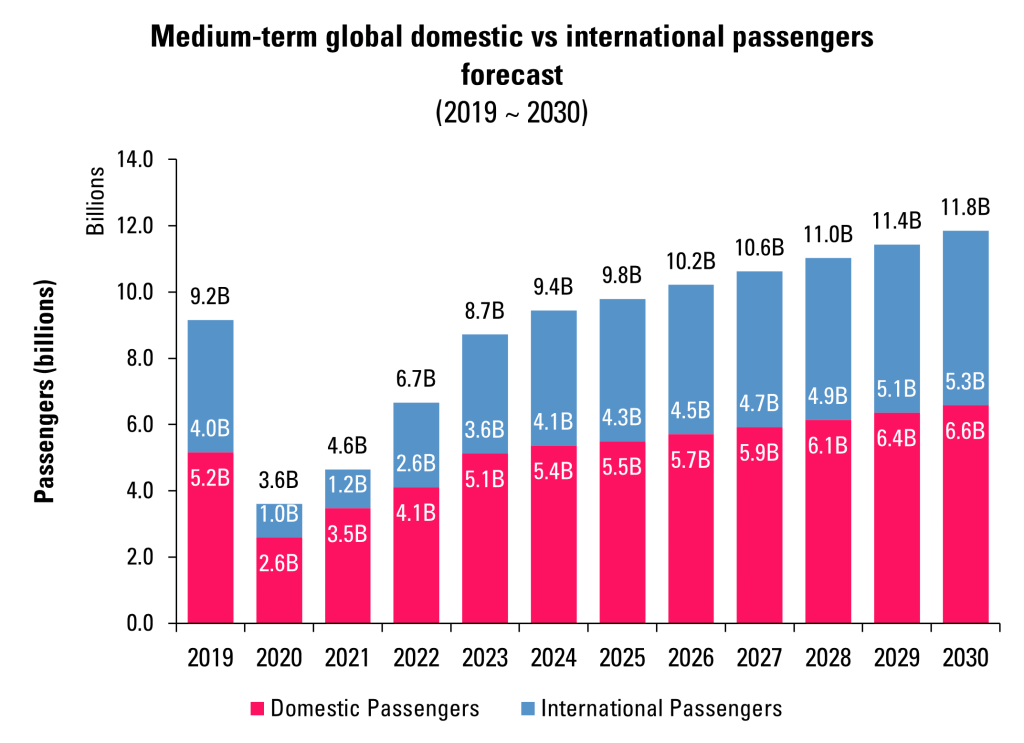
Europe, meanwhile, continues to rely on international tourism, especially in Mediterranean destinations like Spain and Italy. North America tells a different story: US domestic traffic shrank 2 percent in early 2025, while Canada’s domestic market grew but international travel fell.
The overall trend underscores an industry in transition. Emerging regions are expanding capacity and attracting investment, while mature markets face headwinds from aging populations and tighter policies. For travellers, that means new routes and better connectivity in developing regions, but slower progress and higher costs in long-established markets.
For more information, visit aci.aero.
THAI AIRWAYS’ “NOT-QUITE-BUSINESS” CLASS TAKES FLIGHT
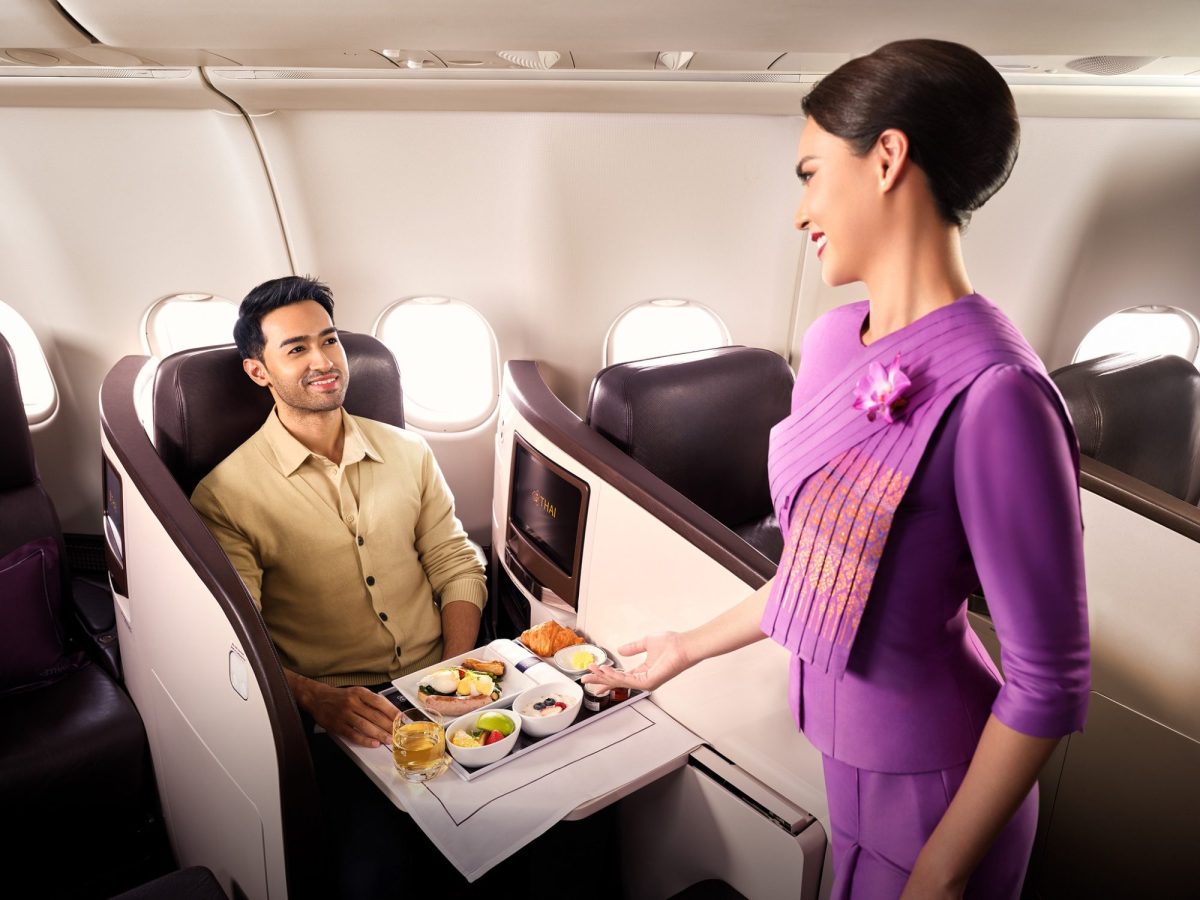
Thai Airways is testing a curious new concept that blurs the line between premium economy and business class. Dubbed Premium Economy Plus, the cabin class quietly appeared on the airline’s Facebook page, debuting on October 26, 2025, for routes from Bangkok to Chennai, Dhaka, Hyderabad, Jakarta, and Kathmandu.
The airline promises “spacious seats, generous legroom, and exclusive services.” What makes it interesting is that these routes will be flown by refurbished Airbus A330-300s once operated by Virgin Atlantic—complete with 31 lie-flat herringbone seats from the airline’s former Upper Class cabin. In other words, Thai Airways is selling what are effectively business-class seats under a premium economy label.
For these short regional routes, no business-class fares will be offered. Instead, passengers booking Premium Economy Plus will enjoy fully flat beds but without the frills of true business service—no mention yet of lounge access, priority boarding, or fine dining. As aviation analyst Kyle Stewart quipped, “It’s business class by another name.”
The decision appears rooted in market realities. Demand for premium fares between Bangkok and regional cities like Dhaka and Kathmandu is limited, making it uneconomical to offer full-service business cabins. By marketing lie-flat seats as premium economy, Thai can attract comfort-seeking travellers at lower price points while keeping operating costs in check.
It’s also part of a broader industry shift. Airlines worldwide are segmenting their cabins more finely—think “basic economy,” “business lite,” and now “premium economy plus.” Thai’s experiment pushes this idea further, monetising comfort without promising luxury.
Whether the move succeeds or confuses passengers remains to be seen. But one thing’s certain: with Premium Economy Plus, Thai Airways has created what may be the most comfortable “not-quite-business” class in the skies.
Visit thaiairways.com for details.
FOUR SEASONS NAMED BEST LUXURY HOTEL BRAND IN THE WORLD

Four Seasons Hotels and Resorts has been recognised as the Best Luxury Hotel Brand in the World at the Business Traveller Awards, reflecting its enduring appeal among business executives across the globe.
With 133 properties spanning five continents, the brand has built a reputation for consistency, quality, and attentive service. Business travellers cite the seamless check-in, quiet suites, and well-considered amenities as key factors that make Four Seasons a preferred choice when balancing demanding schedules and frequent travel.
Founded by Isadore Sharp, Four Seasons emphasises high-quality hotel experiences year-round. Its leadership approach and focus on attracting and retaining top talent have helped the brand maintain its position at the forefront of luxury hospitality.
The group’s commitment to personalised, frictionless experiences extends across all touchpoints, from reservations to in-stay services. This approach allows travellers to focus on work or relaxation with minimal disruption, a factor that has contributed to its recognition in the Business Traveller Awards.
Executives in markets from Japan to Spain continue to favour the brand for both short business trips and extended stays, reinforcing Four Seasons’ global presence and influence.
The award highlights the brand’s ability to combine operational excellence with a thoughtful, guest-focused approach, maintaining its standing as a benchmark in luxury hospitality worldwide.
For information and bookings, visit fourseasons.com.
PHNOM PENH’S GAME‑CHANGING NEW AIRPORT OPENS
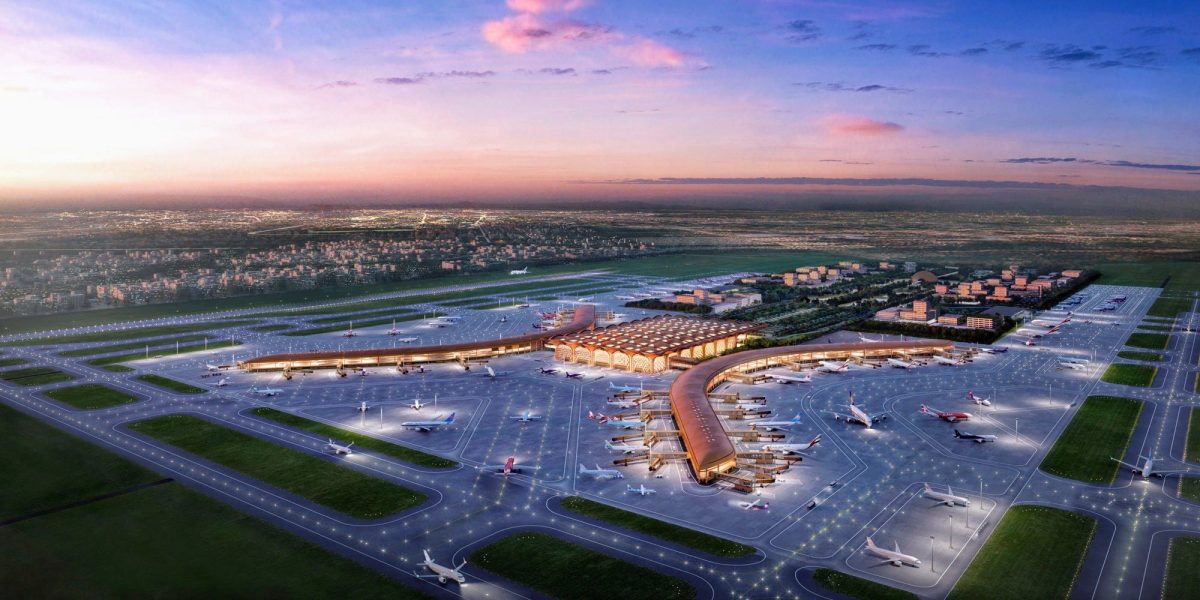
A major new gateway recently arrived for Cambodia’s capital as Techo International Airport (TIA) officially opened and began operations, marking a significant upgrade in the nation’s aviation infrastructure. The facility, reported to cost as much as US$3 billion, replaces the ageing Phnom Penh International Airport and is situated some 25 kilometres south of the city, in Kandal Province. The IATA airport code is KTI.
Designed to international ‘4F’ standards, the airport features dual 4-km runways capable of handling large long‑haul aircraft, and its first phase offers capacity for 13 million passengers annually, with ambitions to reach 30 million by 2030 and 50 million by 2050. The terminal was crafted by Britain’s Foster + Partners, and major construction was undertaken by Chinese firms under a joint venture between the government and Overseas Cambodian Investment Corporation. The airport’s impressive design has earned widespread praise since its official opening.
Prime Minister Hun Manet hailed the new airport as central to Cambodia’s strategy of strengthening tourism, cargo and global connectivity. He emphasized that TIA will anchor the country’s push to become a regional aviation hub. The inauguration ceremony drew scores of business, diplomatic, and aviation industry figures, reflecting broad aspirations for the project’s economic impact.
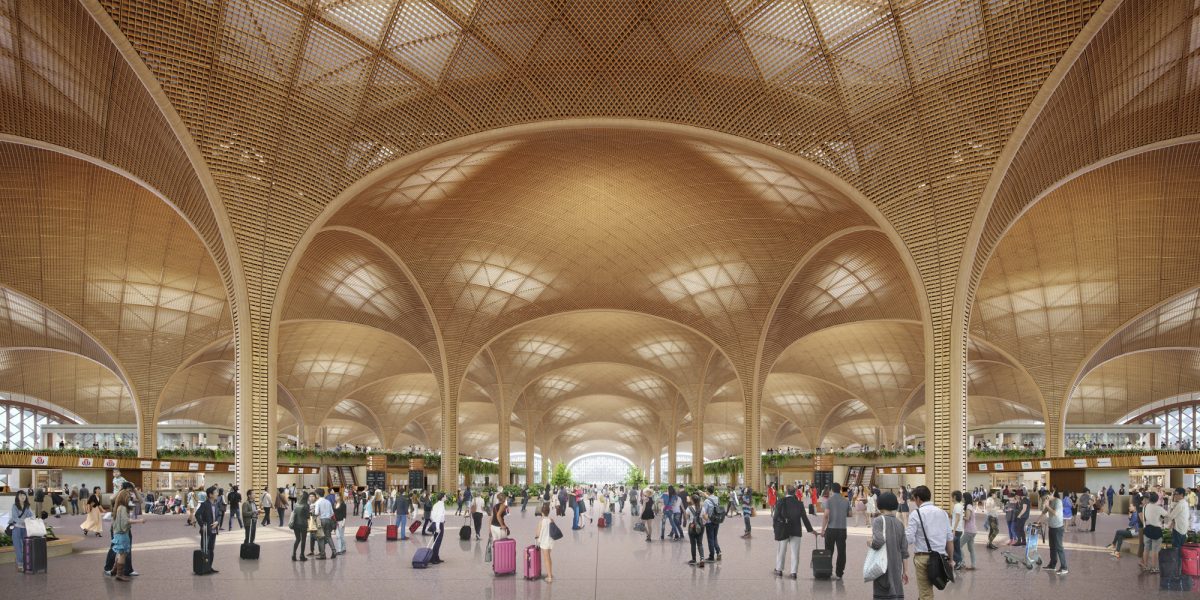
While the airport opens with promise, observers note that infrastructure around access roads, public transport links and initial operational teething problems may challenge early perceptions. Nonetheless, the launch of TIA signals Cambodia’s intention to elevate its aviation and tourism footprint in Southeast Asia’s increasingly competitive travel market.
To learn more, visit pnh.cambodia-airports.aero.
LANGKAWI–TASHKENT: BATIK AIR’S CURIOUS NEW ROUTE

If you were wondering which new routes might leave aviation analysts scratching their heads the most in 2025, Batik Air may have just provided a new contender its latest announcement. Starting December 14, 2025, the airline will operate a direct flight connecting Langkawi International Airport (LGK) in Kedah with Tashkent International Airport (TAS) in Uzbekistan.
The once-weekly service responds to growing interest from Central Asia, offering travellers a direct link to Malaysia’s northern island jewel without transiting through Kuala Lumpur. It complements Batik Air’s existing Kuala Lumpur–Tashkent flights and reflects the rising popularity of Langkawi, famed for its pristine beaches, lush rainforests, and UNESCO Global Geopark status.
Batik Air Chief Executive Officer Datuk Chandran Rama Muthy said the route strengthens connections between emerging markets and northern Malaysia. “This service provides a direct pathway for travellers from Uzbekistan to experience Langkawi while supporting Visit Malaysia 2026,” he noted. “It’s about meaningful connections and sharing Malaysia’s attractions with the world.”

The link also encourages tourism, cultural exchange, and business collaboration, with Tashkent offering a mix of Islamic architecture, bustling bazaars, and modern amenities. For Malaysia, the new service positions Langkawi as a key international gateway while bolstering the nation’s tourism growth ahead of Visit Malaysia 2026.
With this addition, Batik Air expands its network strategically, enhancing convenience for travellers and reinforcing economic and cultural ties between northern Malaysia and Central Asia.
Passengers planning to explore Langkawi or Tashkent can check flight schedules via the Batik Air app or batikair.com.



















